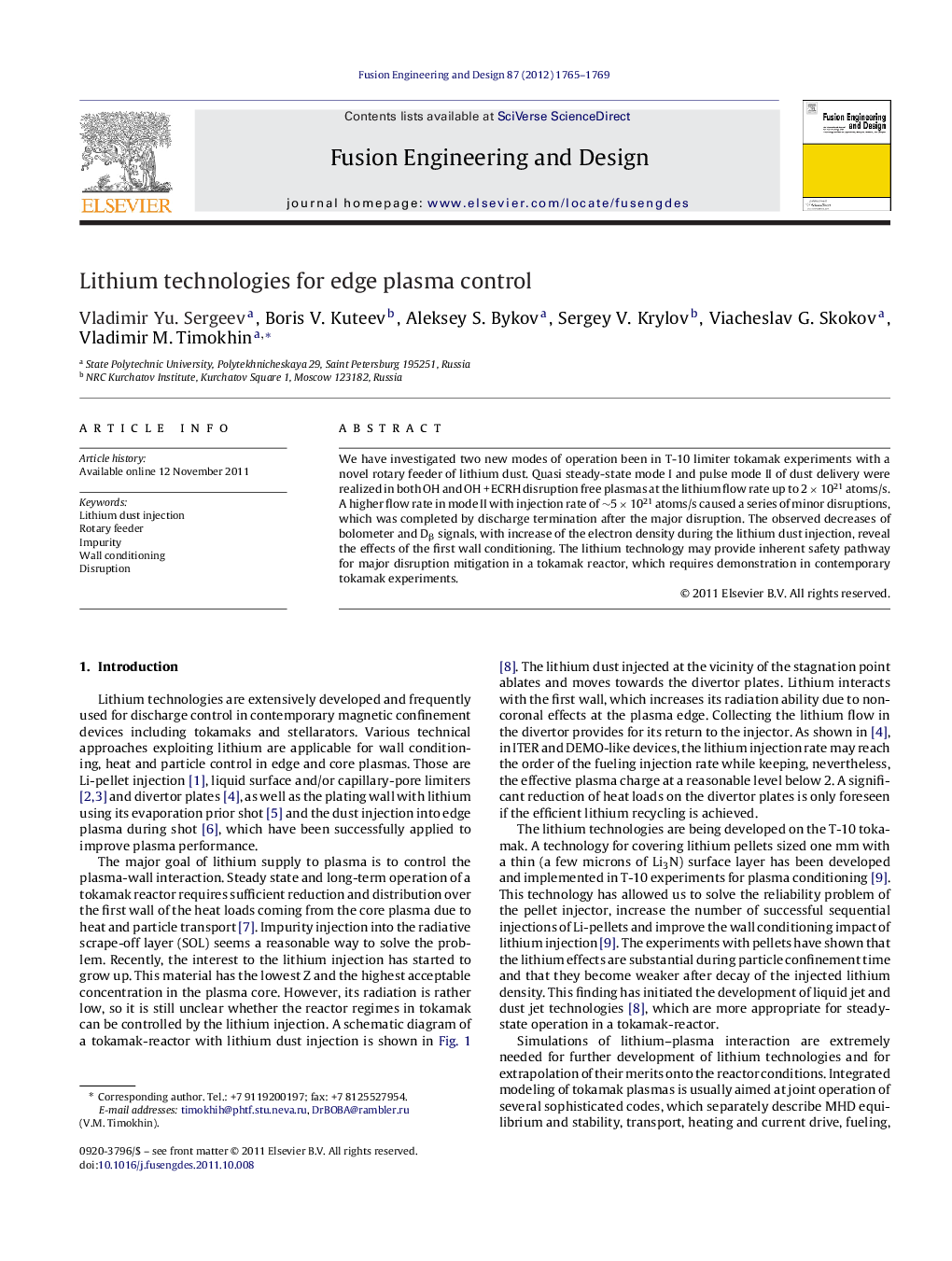| Article ID | Journal | Published Year | Pages | File Type |
|---|---|---|---|---|
| 271581 | Fusion Engineering and Design | 2012 | 5 Pages |
We have investigated two new modes of operation been in T-10 limiter tokamak experiments with a novel rotary feeder of lithium dust. Quasi steady-state mode I and pulse mode II of dust delivery were realized in both OH and OH + ECRH disruption free plasmas at the lithium flow rate up to 2 × 1021 atoms/s. A higher flow rate in mode II with injection rate of ∼5 × 1021 atoms/s caused a series of minor disruptions, which was completed by discharge termination after the major disruption. The observed decreases of bolometer and Dβ signals, with increase of the electron density during the lithium dust injection, reveal the effects of the first wall conditioning. The lithium technology may provide inherent safety pathway for major disruption mitigation in a tokamak reactor, which requires demonstration in contemporary tokamak experiments.
► We have investigated two new modes of operation been in T-10 limiter tokamak experiments with a novel rotary feeder of lithium dust. ► The observed decreases of bolometer and Dβ signals, with increase of the electron density during the lithium dust injection, reveal the effects of the first wall conditioning. ► The lithium technology may provide inherent safety mission for major disruption mitigation in a tokamak reactor, which requires demonstration in contemporary tokamak experiments.
